Our Library
Explore our publications, from research papers and series to educational materials, covering all aspects of conflict transformation and peace promotion.
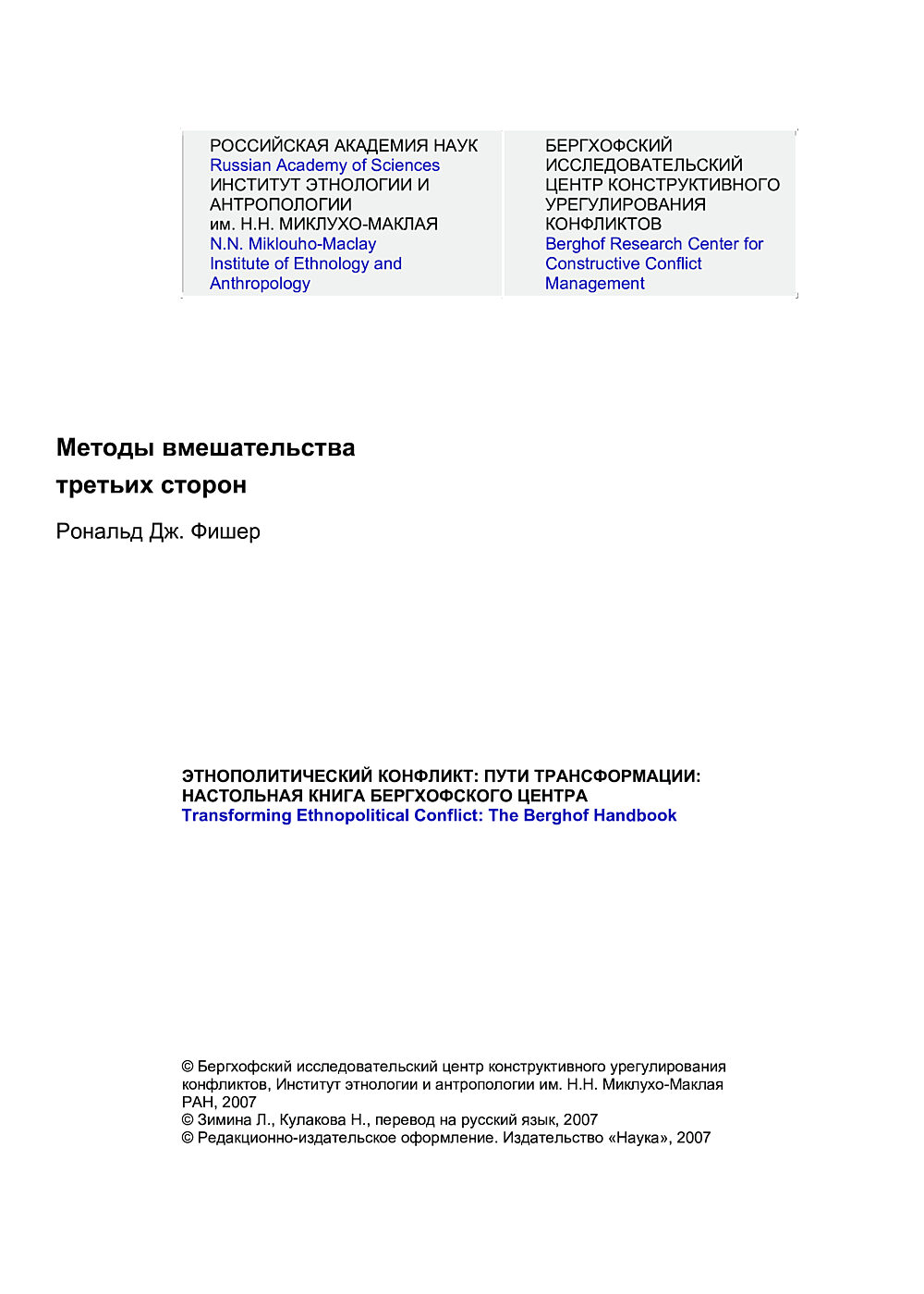
Методы вмешательства третьих сторонHandbook Article
[Аннотация машинный перевод] Рассматриваются различные формы вмешательства третьих сторон (например, примирение, консультации, посредничество, силовое посредничество, арбитраж и миротворчество) с упором на посредничество. Используя базовую модель на случай непредвиденных обстоятельств, автор описывает, какая роль третьей стороны может быть наиболее успешной в каком контексте. Представлены критические вопросы, в том числе: культура, асимметрия власти, предубеждения, время, эффективность, координация и этика вмешательства. (обновлено и исправлено для печатного издания 2011 г.)
- Year2007
- Author(s)Ron Fisher
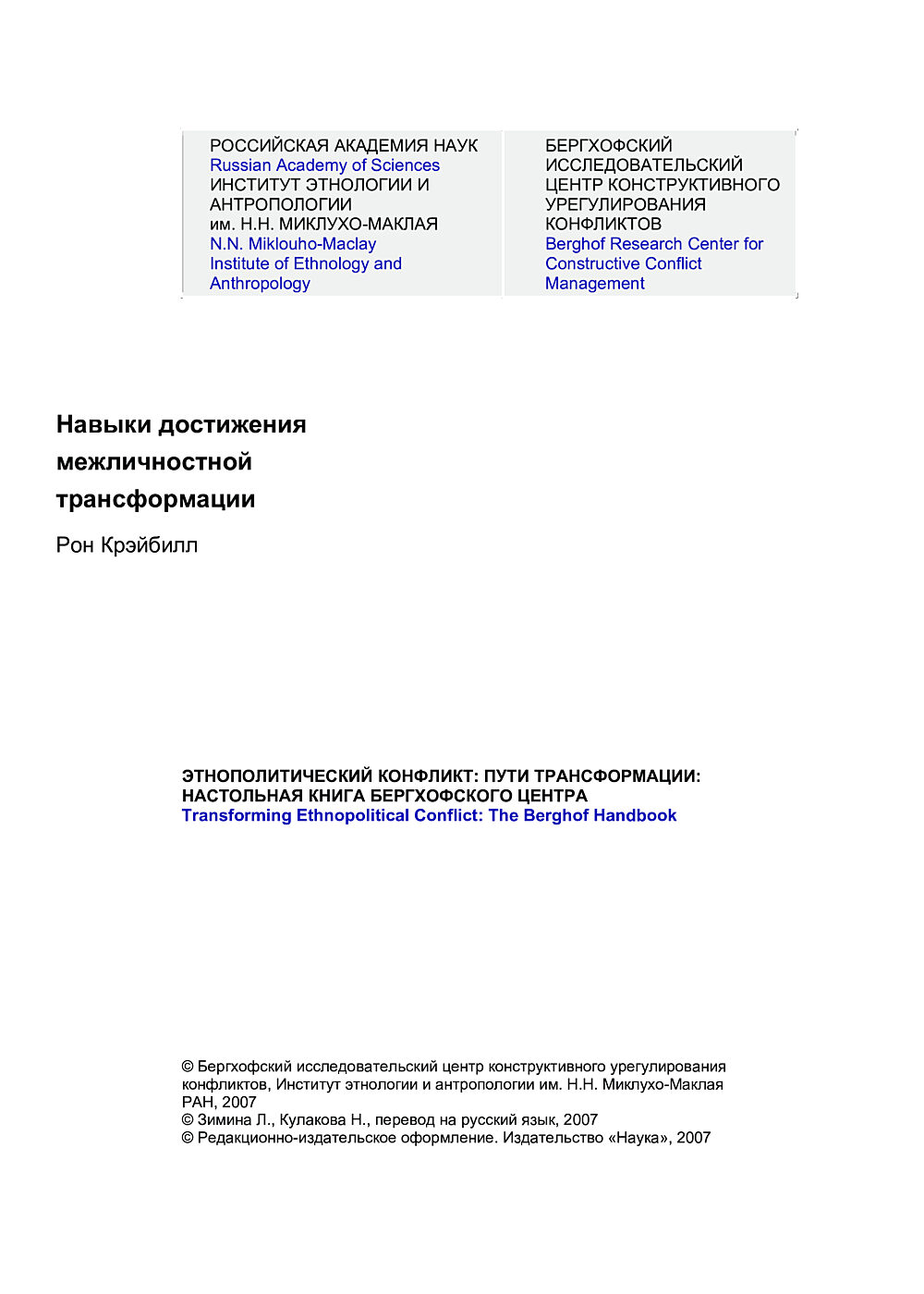
Навыки достижения межличностной трансформацииHandbook Article
[Резюме переведено автоматически] Описывает наиболее важные навыки и инструменты, которые необходимы фасилитаторам для повышения их способностей на индивидуальном и межличностном уровне. Автор представляет: навыки, используемые в моментальном взаимодействии со сторонами; методы содействия устойчивому диалогу; и принципы разработки процессов для решения более крупных институциональных и структурных реалий конфликтов. (переработано для печатного издания 2004 г.)
- Year2007
- Author(s)Ron Kraybill
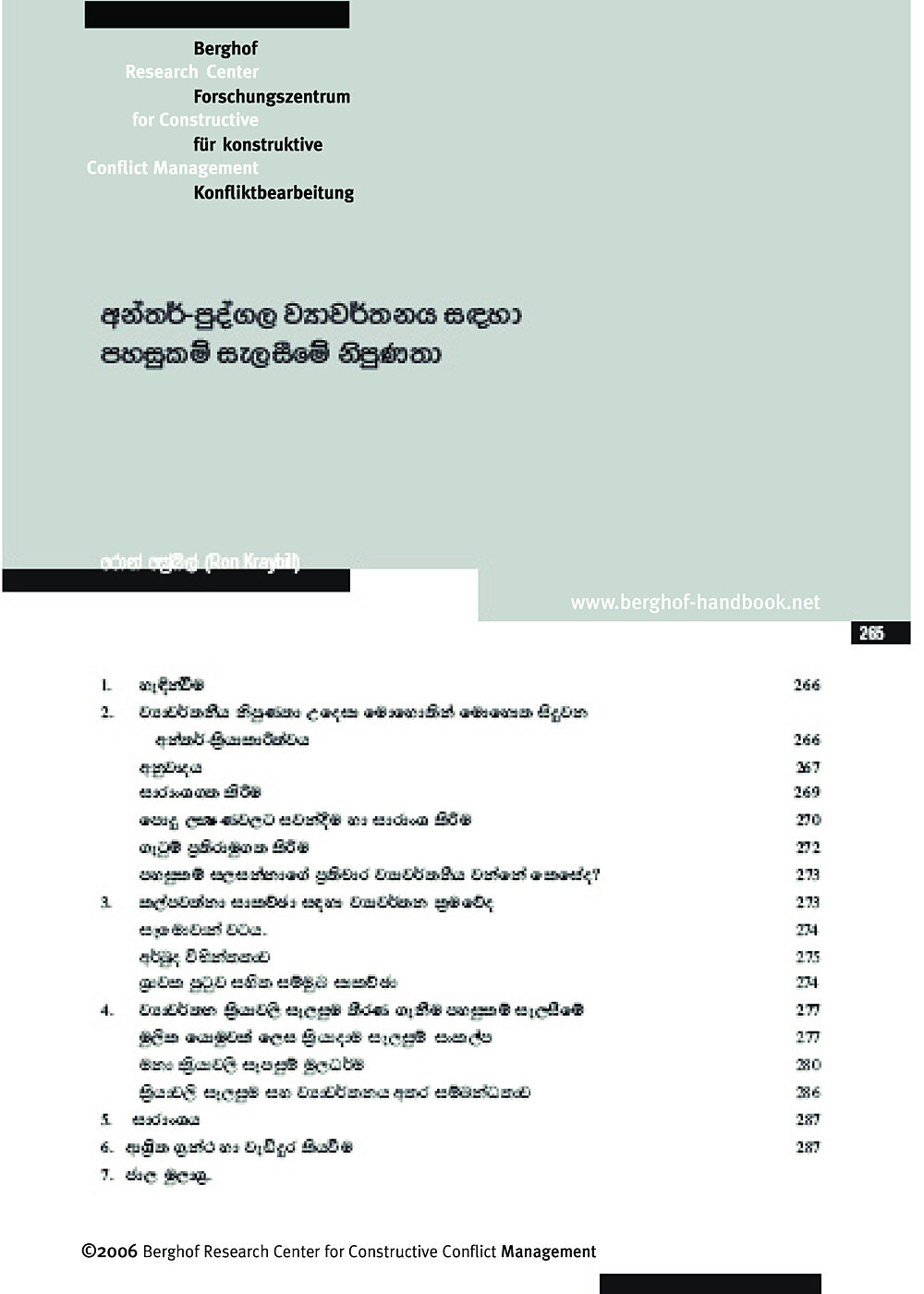
අන්තර් පුද්ගල න්යාවර්තනය සඳහා පහසුකම් සැලසීමේ නිපුණතාHandbook Article
[වියුක්ත යන්ත්ර-පරිවර්තනය] පුද්ගල හා අන්තර් පුද්ගල මට්ටමේ හැකියාවන් වැඩි දියුණු කිරීම සඳහා පහසුකම් සපයන්නන්ට අවශ්ය වන වැදගත්ම කුසලතා සහ මෙවලම් විස්තර කරයි. කතුවරයා ඉදිරිපත් කරයි: පාර්ශවයන් සමඟ මොහොතකට අන්තර්ක්රියා කිරීමේදී භාවිතා කරන කුසලතා; තිරසාර සංවාදයට පහසුකම් සැලසීමේ ක්රම; සහ ගැටුම්වල විශාල ආයතනික හා ව්යුහාත්මක යථාර්ථයන් ආමන්ත්රණය කිරීම සඳහා ක්රියාවලි සැලසුම් කිරීමේ මූලධර්ම. (2004 මුද්රණ සංස්කරණය සඳහා සංශෝධනය කරන ලදි)
- Year2007
- Author(s)Ron Kraybill
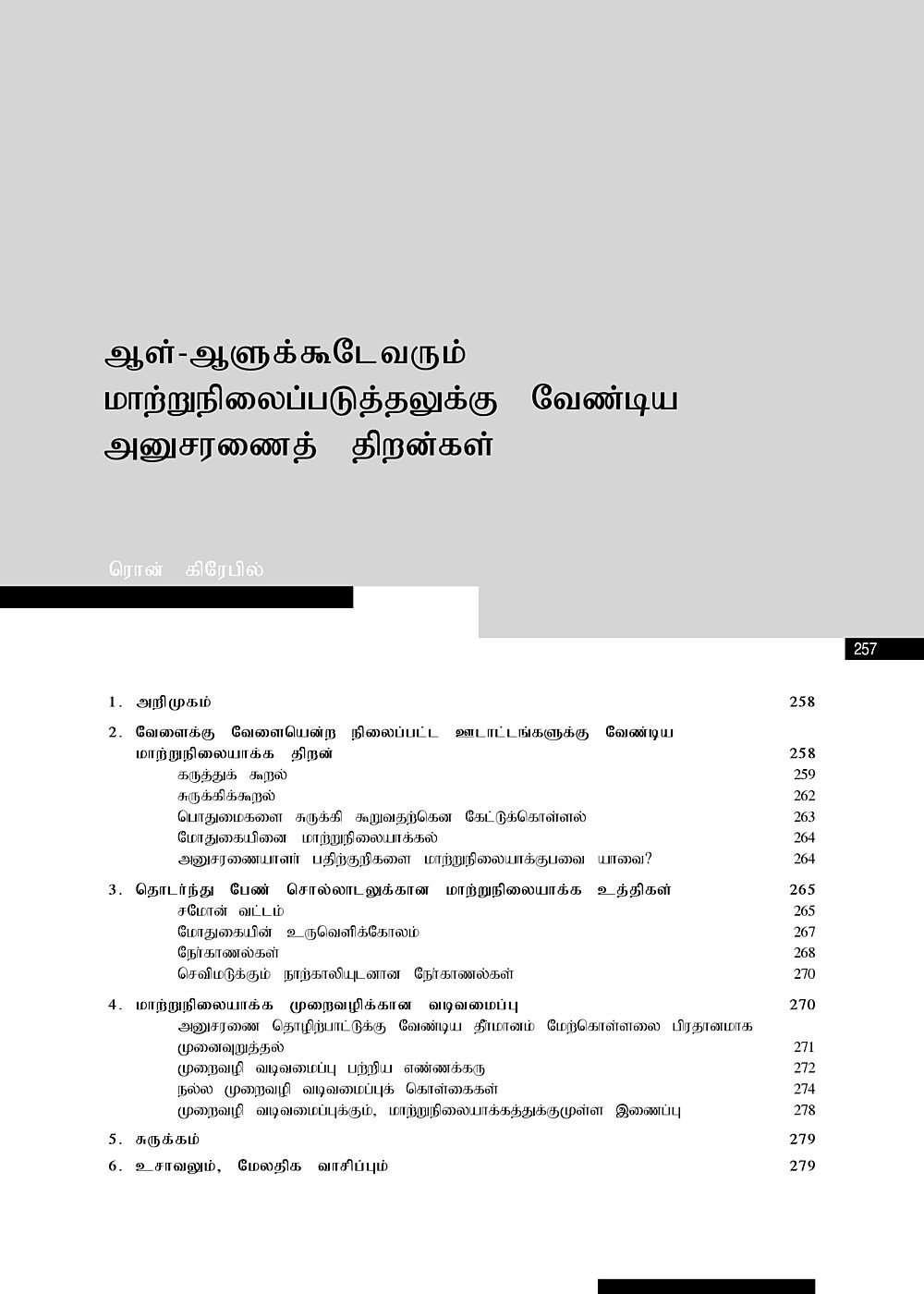
ஆள் - ஆளுக்கூடேவரும் மாற்றுநிலைப்படுத்தலுக்கு வேண்டிய அனுசரணைத் திறன்கள்Handbook Article
[சுருக்கம் இயந்திரம்-மொழிபெயர்க்கப்பட்டுள்ளது] தனிப்பட்ட மற்றும் ஒருவருக்கொருவர் மட்டத்தில் திறன்களை மேம்படுத்துவதற்கு தேவையான மிக முக்கியமான திறன்கள் மற்றும் கருவிகளை எளிதாக்குகிறது. ஆசிரியர் முன்வைக்கிறார்: கட்சிகளுடனான கணம் மூலம் கணத்தில் தொடர்பு கொள்ளும் திறன்கள்; நீடித்த உரையாடலை எளிதாக்குவதற்கான நுட்பங்கள்; மற்றும் மோதல்களின் பெரிய நிறுவன மற்றும் கட்டமைப்பு யதார்த்தங்களை நிவர்த்தி செய்வதற்கான செயல்முறை வடிவமைப்பின் கொள்கைகள். (2004 அச்சு பதிப்பிற்காக திருத்தப்பட்டது)
- Year2007
- Author(s)Ron Kraybill

Построение команды и организационное развитие как методы предупреждения и разрешения конфликтовHandbook Article
[Аннотация машинный перевод] Предлагает подходы к трансформации конфликтов для групп, команд и организаций. Авторы выделяют пять уровней сотрудничества внутри команд (т.е. уровень отдельных членов, уровень содержания, уровень взаимодействия, процедурный уровень и уровень внешних отношений между группой и ее окружением) и предлагают предложения по разрешению конфликтов внутри команд на каждый уровень. (переработано для печатного издания 2004 г.)
- Year2007
- Author(s)Friedrich Glasl, Rudi Ballreich
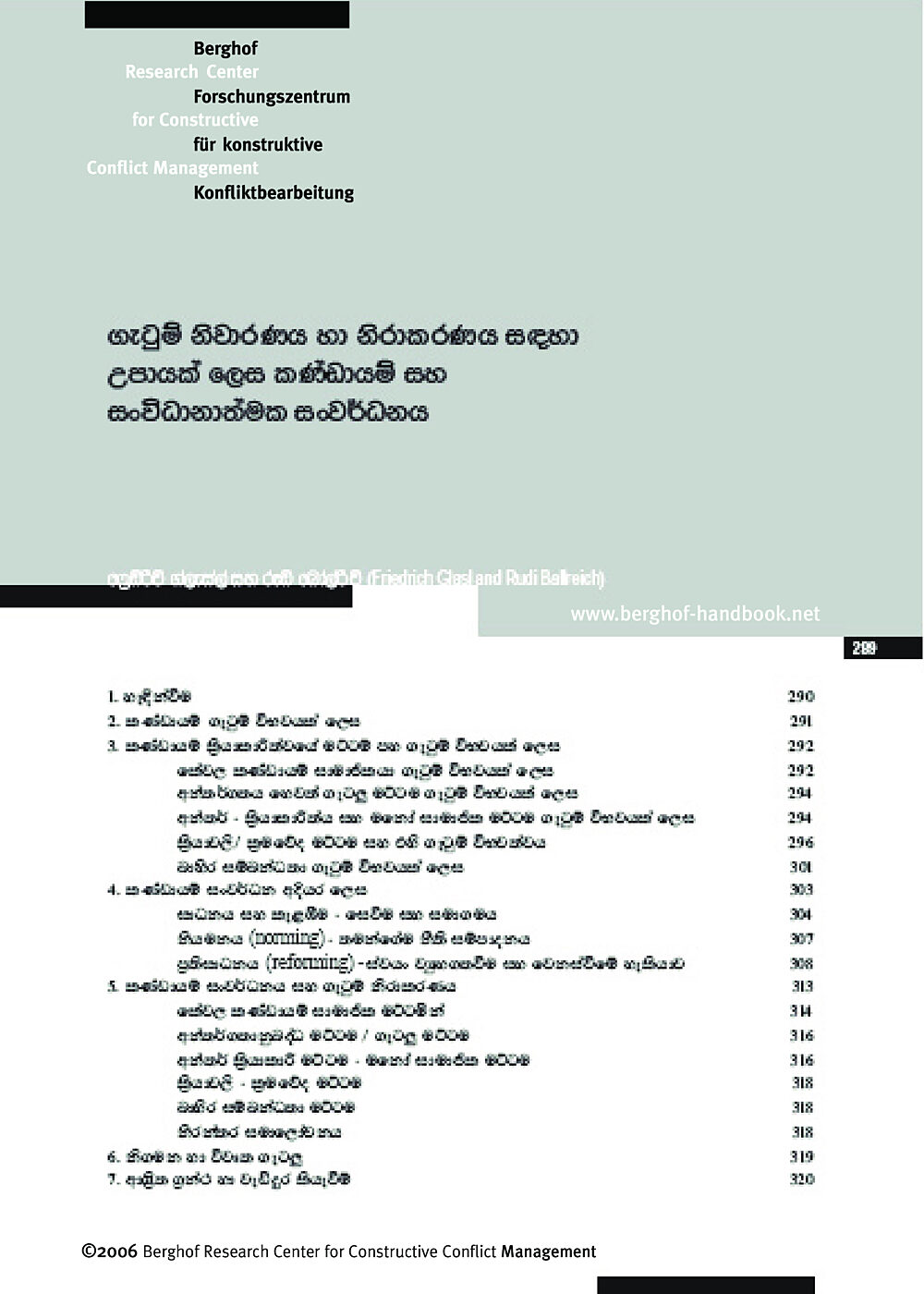
ගැටුම් නිවාරණය හා නිරාකරණය සඳහා උපායක් ලෙස කණ්ඩායම් සහ සංවිධානාත්මක සංවර්ධනයHandbook Report
[වියුක්ත යන්ත්ර-පරිවර්තනය] කණ්ඩායම්, කණ්ඩායම් සහ සංවිධාන සඳහා ගැටුම් පරිවර්තන ප්රවේශයන් ඉදිරිපත් කරයි. කතුවරුන් කණ්ඩායම් තුළ සහයෝගීතාවයේ මට්ටම් පහක් හඳුනා ගනී (එනම් තනි සාමාජිකයන්ගේ මට්ටම, අන්තර්ගත මට්ටම, අන්තර්ක්රියා මට්ටම, ක්රියා පටිපාටි මට්ටම සහ කණ්ඩායම සහ එහි පරිසරය අතර බාහිර සම්බන්ධතාවල මට්ටම) සහ කණ්ඩායම් අතර ගැටුම් විසඳීම සඳහා යෝජනා ඉදිරිපත් කරයි. එක් එක් මට්ටම. (2004 මුද්රණ සංස්කරණය සඳහා සංශෝධනය කරන ලදි)
- Year2007
- Author(s)Friedrich Glasl, Rudi Ballreich
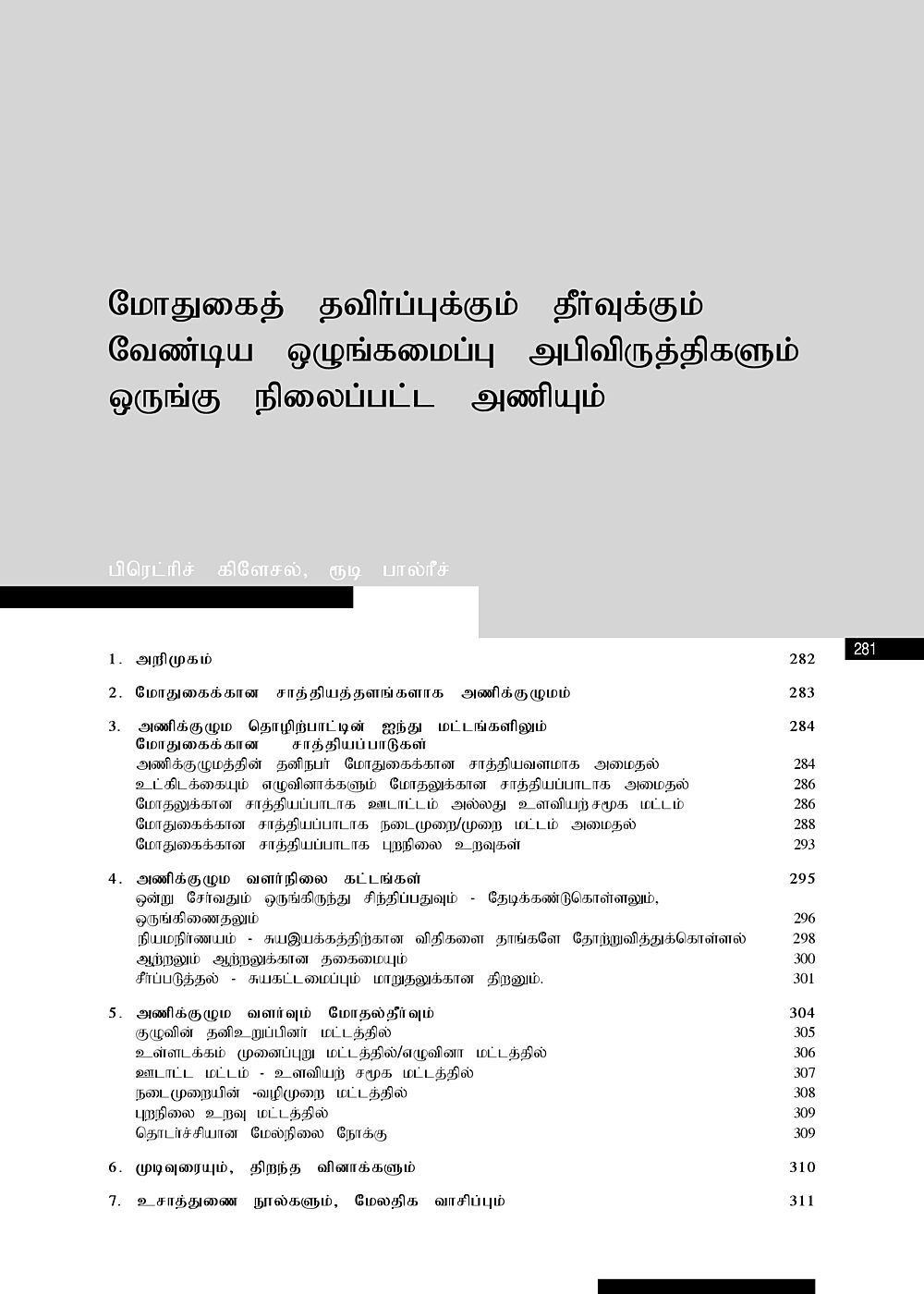
மோதுகைத் தவிர்ப்புக்கும் தீர்வுக்கும் வேண்டிய ஒழுங்கமைப்பு அபிவிருத்திHandbook Article
[சுருக்கம் இயந்திரம் மொழிபெயர்க்கப்பட்டுள்ளது] குழுக்கள், அணிகள் மற்றும் அமைப்புகளுக்கான மோதல் மாற்ற அணுகுமுறைகளை வழங்குகிறது. ஆசிரியர்கள் அணிகளுக்குள் ஐந்து நிலை ஒத்துழைப்பை அடையாளம் காண்கின்றனர் (அதாவது தனிப்பட்ட உறுப்பினர்களின் நிலை, உள்ளடக்க நிலை, தொடர்பு நிலை, நடைமுறை நிலை மற்றும் குழு மற்றும் அதன் சூழலுக்கு இடையிலான வெளி உறவுகளின் நிலை) மற்றும் அணிகளுக்குள் மோதலைத் தீர்ப்பதற்கான பரிந்துரைகளை வழங்குகின்றன ஒவ்வொரு நிலை. (2004 அச்சு பதிப்பிற்காக திருத்தப்பட்டது)
- Year2007
- Author(s)Friedrich Glasl, Rudi Ballreich

От разрешения к трансформации конфликтов: оценка роли и воздействия проектов по налаживанию диалогаHandbook Article
[Абстрактный машинный перевод] Представляет диалоги как классическое средство конструктивного разрешения конфликтов. Автор дает обзор идеальных типов и определяет основные элементы большинства диалоговых процессов. Он обсуждает диалог в контексте различных других подходов, чтобы установить критерии измерения успеха. (переработано для печатного издания 2004 г.)
- Year2007
- Author(s)Norbert Ropers
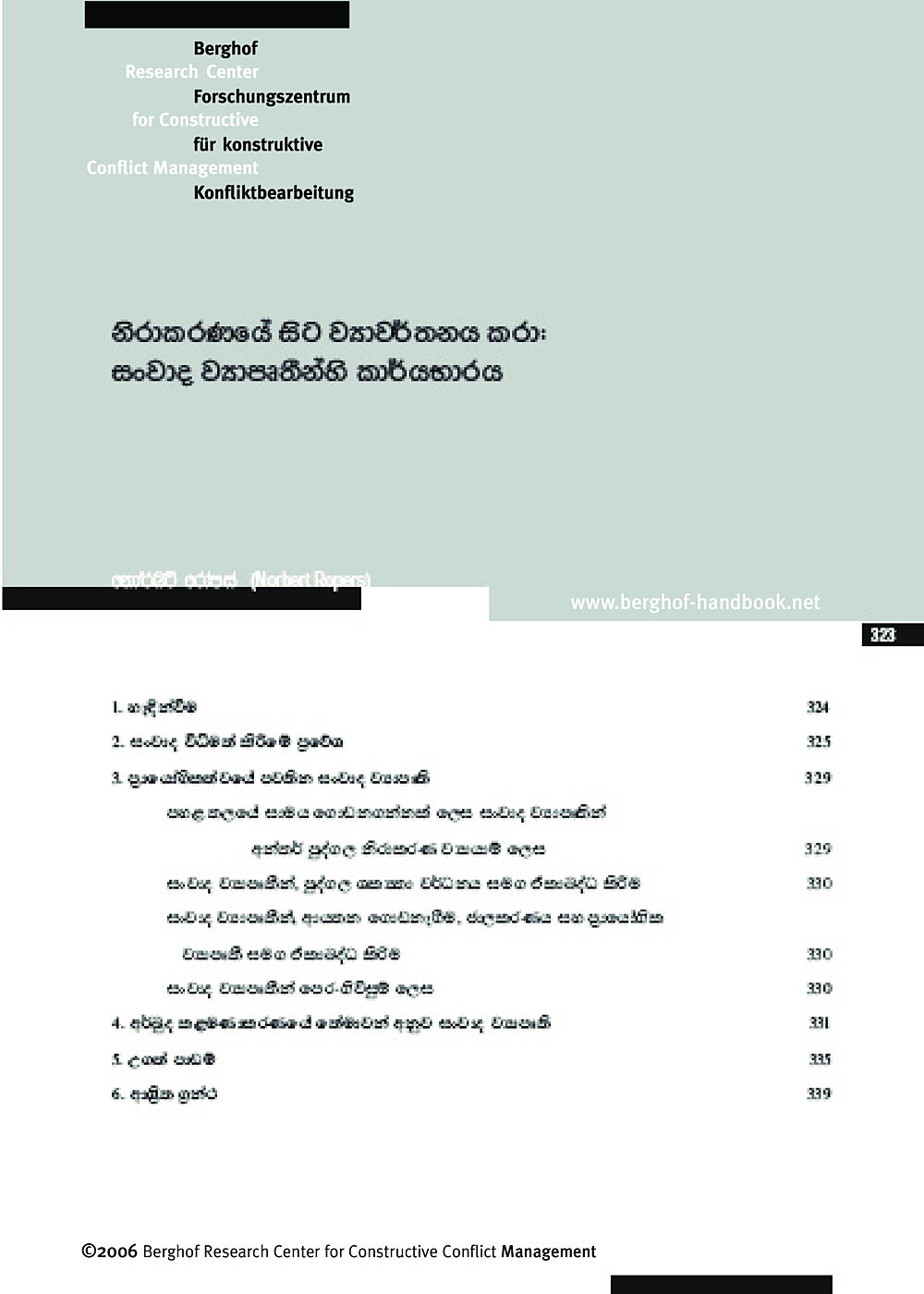
නිරාකරණයේ සිට ව්යාවර්තනය කරා: සංවාද ව්යාපෘතීන්හි කාර්යභාරයHandbook Article
[වියුක්ත යන්ත්ර-පරිවර්තනය] ගැටුම් සමඟ ruc ලදායී ලෙස කටයුතු කිරීමේ සම්භාව්ය මාධ්යයක් ලෙස සංවාද ඉදිරිපත් කරයි. කතුවරයා පරමාදර්ශී වර්ග පිළිබඳ දළ විශ්ලේෂණයක් ලබා දෙන අතර බොහෝ සංවාද ක්රියාවලීන්ගේ මූලික අංග හඳුනා ගනී. සාර්ථකත්වය මැනීම සඳහා නිර්ණායක ස්ථාපිත කිරීම සඳහා ඔහු වෙනත් විවිධ ප්රවේශයන්ගේ සන්දර්භය තුළ සංවාදය සාකච්ඡා කරයි. (2004 මුද්රණ සංස්කරණය සඳහා සංශෝධනය කරන ලදි)
- Year2007
- Author(s)Norbert Ropers
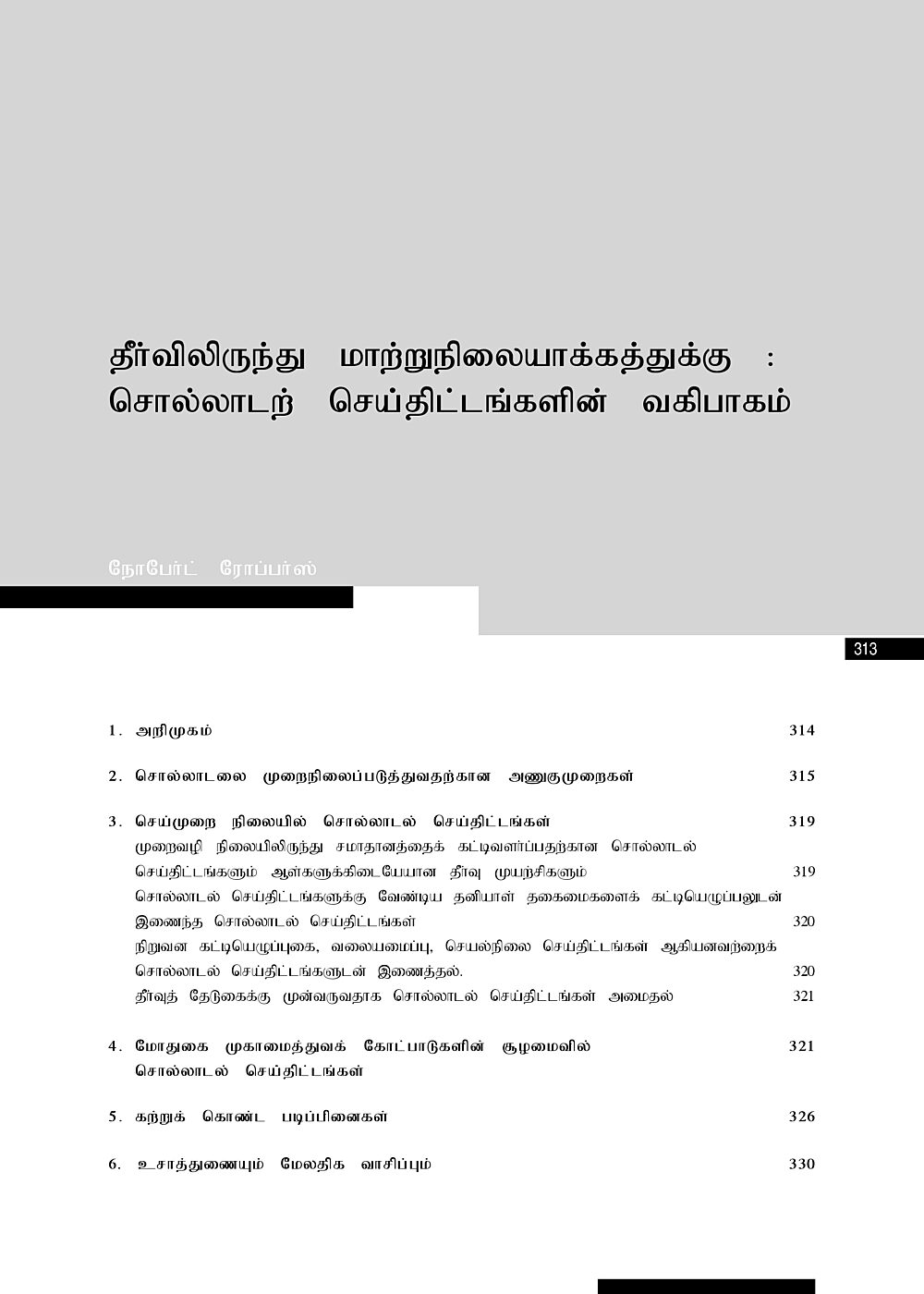
நோபேர்ட் ரோப்பர்ஸ் தீர்விலிருந்து மாற்றுநிலையாக்கத்திற்கு: சொல்லாடல் செய்திட்டங்களின் வகிபாகம்Handbook Article
[சுருக்கம் இயந்திரம் மொழிபெயர்க்கப்பட்டுள்ளது] மோதல்களை ஆக்கபூர்வமாக கையாள்வதற்கான கிளாசிக்கல் வழிமுறையாக உரையாடல்களை வழங்குகிறது. ஆசிரியர் சிறந்த வகைகளின் கண்ணோட்டத்தை அளிக்கிறார் மற்றும் பெரும்பாலான உரையாடல் செயல்முறைகளின் அடிப்படை கூறுகளை அடையாளம் காட்டுகிறார். வெற்றியை அளவிடுவதற்கான அளவுகோல்களை நிறுவுவதற்காக அவர் பல்வேறு அணுகுமுறைகளின் பின்னணியில் உரையாடலைப் பற்றி விவாதிக்கிறார். (2004 அச்சு பதிப்பிற்காக திருத்தப்பட்டது)
- Year2007
- Author(s)Norbert Ropers